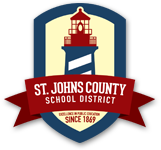The Individuals with Disabilities Education Improvement Act (IDEA 2004) requires a student’s Individual Education Plan (IEP) team to consider whether assistive technology devices and services are needed to meet a student’s educational goals. If the IEP team determines that a student needs assistive technology devices or services to receive a free and appropriate public education (FAPE), it is the district’s responsibility to ensure that they are available for the student.
Assistive technology is any item, piece of equipment, or product system, whether acquired or customized, that is used to increase, maintain, or improve functional capabilities of a student with a disability. An assistive technology service is any service that directly assists a student with a disability in the selection, acquisition, or use of an assistive technology device in the student’s customary environment. This includes:
The evaluation of the needs of the student, including a functional evaluation of an assistive technology device in the student’s customary environment.
Purchasing, leasing or otherwise providing for the acquisition of assistive technology devices by a student.
Selecting, designing, fitting, customizing, adapting, applying, maintaining, repairing, or replacing of assistive technology devices.
Coordinating and using other therapies, interventions, or services with assistive technology devices, such as those associated with existing education and rehabilitation plans and programs.
Assistive technology training and technical assistance for an individual with a disability, or where appropriate, the family of an individual with disabilities.
Training or technical assistance for professionals, employers, or other individuals who provide services to employ or otherwise are substantially involved in the major life functions of an individual with disabilities.
The District’s assistive technology specialists works with school staff and parents to determine the educational necessity of assistive technology and appropriate solutions to meet a student’s needs in the areas of writing, reading, math, adapted environmental controls, activities of daily living, mobility and communication. We are fortunate to live in an age with so many useful tools available to help people with learning differences. However, choosing the best technology for a student requires some time and patience. The right product depends upon the individual student, the setting in which it will be used and the tasks to be accomplished. Assistive technology cannot fix or eliminate learning difficulties, however, by learning to capitalize on strengths and bypass weaknesses, individuals with learning differences can experience success in their educational settings.


